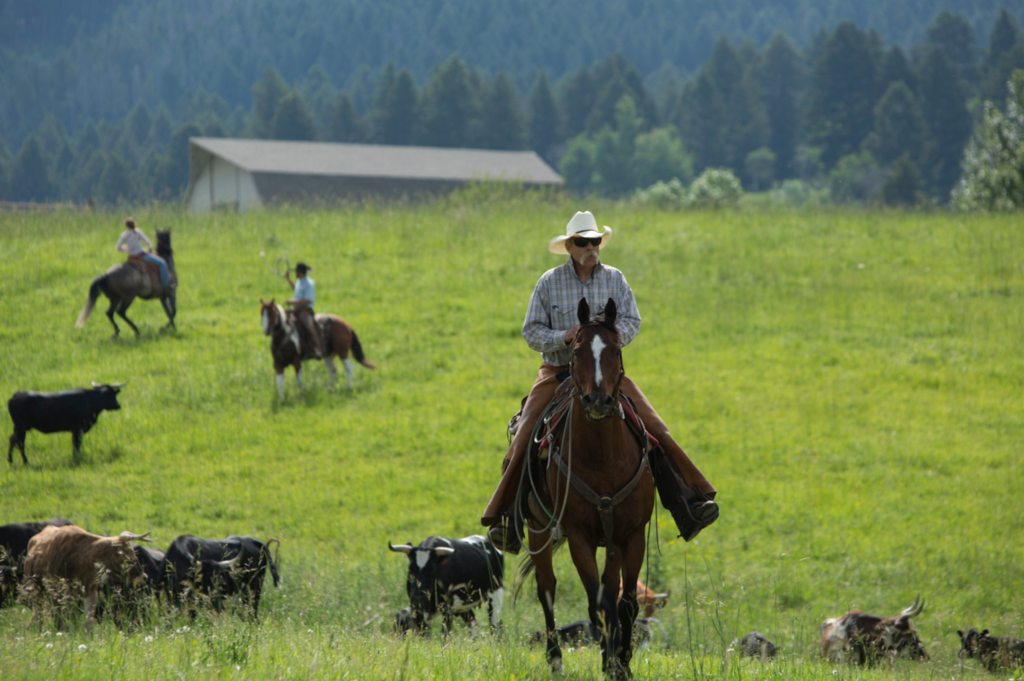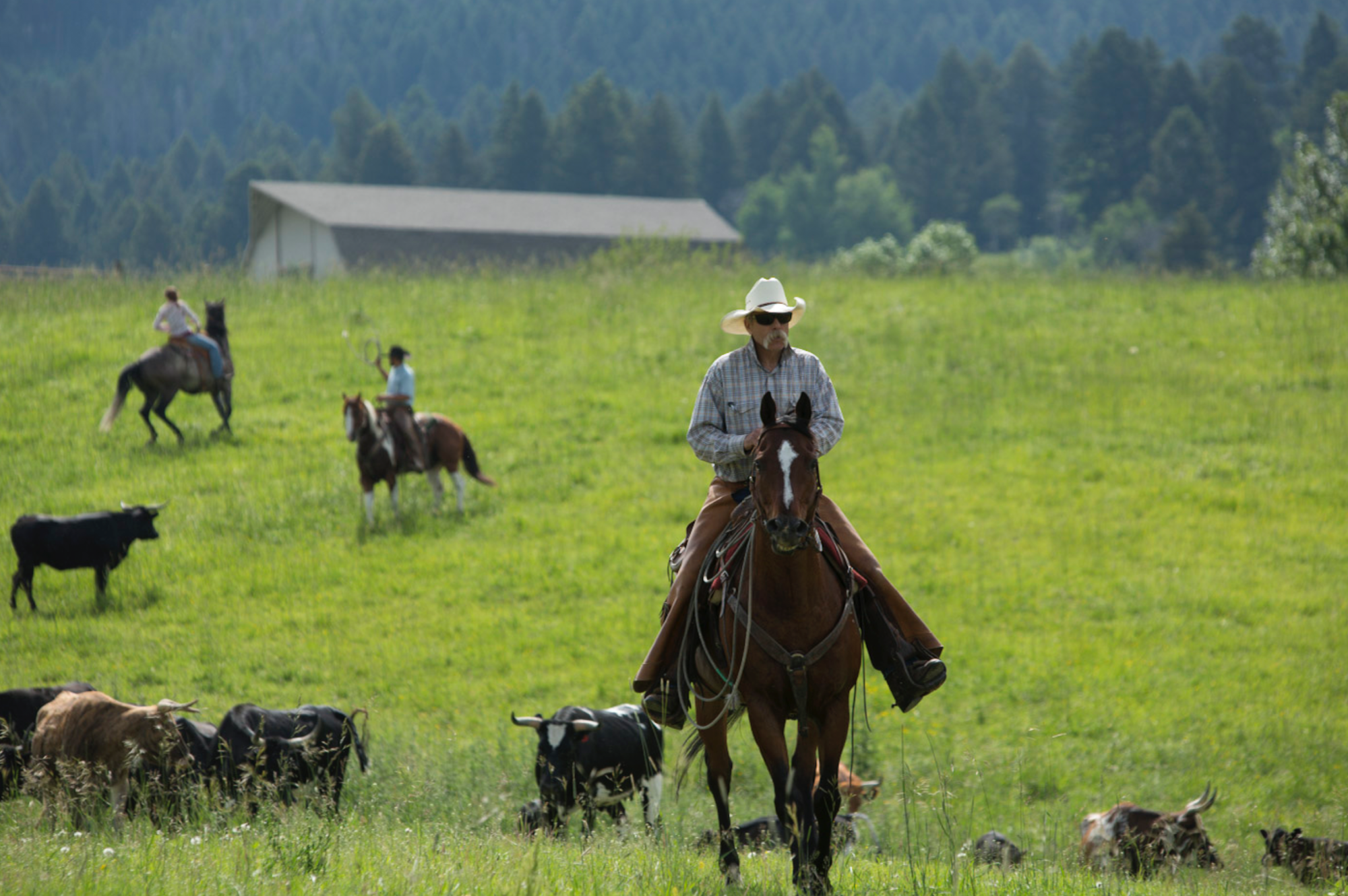
On a small ranch perched above southwest Montana’s Gallatin Valley, a cowboy rides his bay horse on a warm July morning. Teddy Bryan cuts a classic Western figure, complete with graying mustache and battered cowboy hat. Behind him his two sons, 9 and 12, trot their horses over the hill following a small group of spotted cows and their calves. They make the job of moving cattle from pasture to the corrals look easy, but the tranquility is about to subside.
Branding day at Windcall Ranch begins.
The following scene — ropes flying, cows bawling — is becoming harder to find in the Gallatin Valley, a place that is home to more and more people longing for the mountain-town lifestyle. Ironically, even though longtime ranchers like Bryan and wilderness-obsessed newcomers both profess to care about land preservation, the open space surrounding Bozeman, the valley’s biggest city, is rapidly being developed.
Gallatin County has few zoning restrictions, which has led to haphazard and scattered development on what previously was farm or ranch land. The concern for preserving agricultural land is intensifying, says Heather Higinbotham, an energy conservation technician for the city of Bozeman. The rich farmland means people who live here should be able to grow and supply a good portion of the region’s food, she says. But soaring land prices complicates that. Often, the next generation doesn’t want the burden of being land rich and money poor, so they sell parts — if not all — of their family estates.
This scenario is playing out on Windcall Ranch. The Bryans don’t own the land where Teddy has worked for 33 years. The ranch has already been turned over to the second generation of owners, who did not grow up here, and they’ve already sold a portion of the property. Like many ranchers, the Bryans are unsure what their future holds. Increased demand for real estate means buying their own parcel would be vastly more expensive than in previous decades.
An analysis by Headwaters Economics, a nonprofit research organization in Bozeman, found that the number of single-family homes in Montana grew by 50 percent between 1990 and 2016. During that span, 1.3 million acres of undeveloped land was converted to housing.
“Folks maybe don’t recognize the tradeoffs they’re creating,” Headwaters’ Megan Lawson said. When people decide to build homes on large parcels outside the city, they might love the fact that “rush hour” means dealing with a rancher driving his cattle. But what they might not realize, Lawson says, is that putting their home out in that vast open space is affecting the future of those cattle.
But it doesn’t have to be that way. “Agriculture does have a place,” Lawson said. “Amenity town versus agriculture town does not have to be mutually exclusive.” Cities that preserve nearby agriculture encourage more local production, farmers markets, and community gardens, she said.
Bozeman’s challenges aren’t unique. Around the West, beautiful mountain towns such as Boulder and Salt Lake City have long grappled with land-use changes that widen the urban-rural divide.
Bryan has seen change coming since the mid-1990s. Back then, he leased land for his cattle from more than fifteen different landowners. Now he holds eight leases because his neighbors have either sold to non-agricultural users, or the land has been parceled. He knows that the macroeconomic forces at play make it challenging for people like him to stay on the land. As America’s food increasingly comes from industrial feedlots and farms, Western land pencils out better as real estate than bovine range. Windcall’s business is no different.
But they’ll try to persevere. This is the place where Teddy met his wife, Pamela, when she attended a retreat on the ranch back in the 1990s, and where they are raising their children. For decades, the Bryans have cared for this land from the soil up.
It’s not only people who are navigating the obstacles of land fragmentation. Elk, bears, mountain lions, moose, and wolves are the Bryans’ neighbors, and they, too, are affected by Gallatin Valley’s changes.
“Our little special place is shrinking,” says Bryan. But he sees his role from a big-picture perspective. “The important thing is that while you are in a position to have an impact on land use, that you do it to your best ability, and that you are a good steward of that land.”
This story originally appeared in the Bitterroot newsletter.

